Maine had been commercially exporting apple to England at least as early as 1773. The Daily Kennebec Journal in 1900 relates the story of the American apple’s first appearance in Europe: “This [the Newton Pippin] was the first American apple shipped to Europe, and some were sent to Benjamin Franklin in London in 1758, who, it can well be imagined, did his best to popularize it” (Journal, 10/13/1900, pg 4). Even though Maine maintained England as a market for fruit throughout the 1700s and early 1800s, there is not that much information (that I have been able to find so far) on the apple trade before the early 1880s. My guess is that the apple orchard industry, while growing in the domestic economy, was not yet strong enough to seriously export a surplus until perhaps the 1850s and 60s (the Pomological Society was founded in 1873…). Even in 1882, Z. A. Gilbert (secretary of the Board of Agriculture in Maine from 1880 to 1892, president of the Pomological Society from 1873 to 1879, and publisher of eleven volumes of the Agriculture of Maine collection in which I found this information) stated in the Annual Report of the Pomological Society that “this whole business of shipping apples is comparatively in its infancy; it has not been put in the best working shape, it is going to be handled better by and by. It is a new industry in Maine” (pg 382-3).
But when the apple export industry did take off, it was incredibly profitable for Maine farmers, who took advantage of their prime location. In fact, it was a relatively easy and rich industry to enter into. In a letter to the Pomological Society in 1882, B.F. Mathews of Hope, Maine, describes “Mr. L.S. True of Hope, is shipping all he can find in the vicinity to Liverpool” (Annual Report, 1882). Rufus Prince, in the 1887 Annual Report, stated that “With out new markets, with our proximity to the seashore, where we can easily ship to any market in the world, I feel like saying to the young man, not the language of Horace Greeley, ‘Go West,’ but ‘Stay in Maine, set out an orchard and when that one is set, try another and another'” (Report, pg 95). The 1890 national census showed 120 million apple trees in the United States with an average crop of 200 million bushels of apples a season; after the census, apple orchards exploded all over the States in the Southwest all the way to the Pacific, but through increased demand abroad, the East coast was still able to slowly expand without flooding the market. Apples were hot.
One of the biggest questions I had when I was reading through these sources this weekend was “Why the heck would England pay to import thousands of barrels of apples from Maine? Can’t they grow apples themselves?” Apparently England can, but nothing compared to the American, specifically Maine, apple of the nineteenth century. Maine’s climate, especially in the counties of York, Cumberland, Oxford, Franklin, and Kennebec, was just right for the perfect cultivation of massive amounts of high quality apples, and the English demand for this fruit was growing year by year. The high demand combined with successive years of poor apple crops in Europe in the later half of the nineteenth century meant that Maine had an almost guaranteed market, as long as they were careful not to flood it, a fact which farmers were well aware of. The Daily Kennebec Journal in 1881, a year in which Maine’s apple harvest was far more productive than other U.S. producers, urged orchardists to hold on to their booming crop; pick late-keeping varieties and keep them in cold storage until the market clears up and they can fetch a good price again (Journal, 9/20/1881, pg 3-4).
A prolonged discussion throughout the Annual Reports of the Pomological Society involved foreign demand for Maine apples. Could the English could discern a number one (first quality) from a number two (bad quality)? Should Maine growers export all their surplus or only the best? How could farmers make the most profit from their most easily cultivated crop? The answers vary from source to source. Orchardists had the choice of selling their number two apples, usually on the European market, or sending them to a processor to be evaporated and sold as dried fruit. But no one seemed to know which option made more money. In 1896, the Pomological Society’s Annual Report called for farmers to ship their poor quality apples to England (the English could not tell whether an apple was good or bad) because they would fetch a higher price than evaporated fruit. But the Kennebec Journal in that same year asked for farmers to stop exporting number two apples to England; it hurt the reputation of all American apples and drove the price down (Journal, 11/10/1896).
This mix of information mirrors the condition of the market from year to year. The apple harvest and profit from apple exports varied from season to season, as with any other agricultural export. But slowly, over the course of several decades, from the 1880s to the early twentieth century, the prices of apples steadily improved. The best price of Maine apples in England in 1885 was $1.75 a barrel and by 1901, the price remained steady around $3.00 a barrel (Annual Reports, 1885 and 1901). Whatever debate there was over the English ability to discern good apples from bad apples, over the course of about fifteen years people agreed that the better the fruit was packed to be shipped, the higher price it could claim in England.



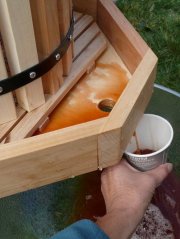
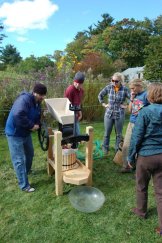




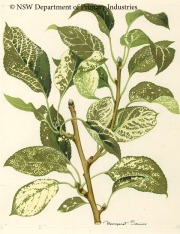

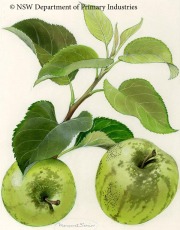
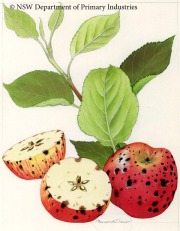


1 comment
Comments feed for this article
22 February, 2010 at 6:41 pm
Heather
Great detail from these sources – seems like your research is “bearing fruit” so to speak…